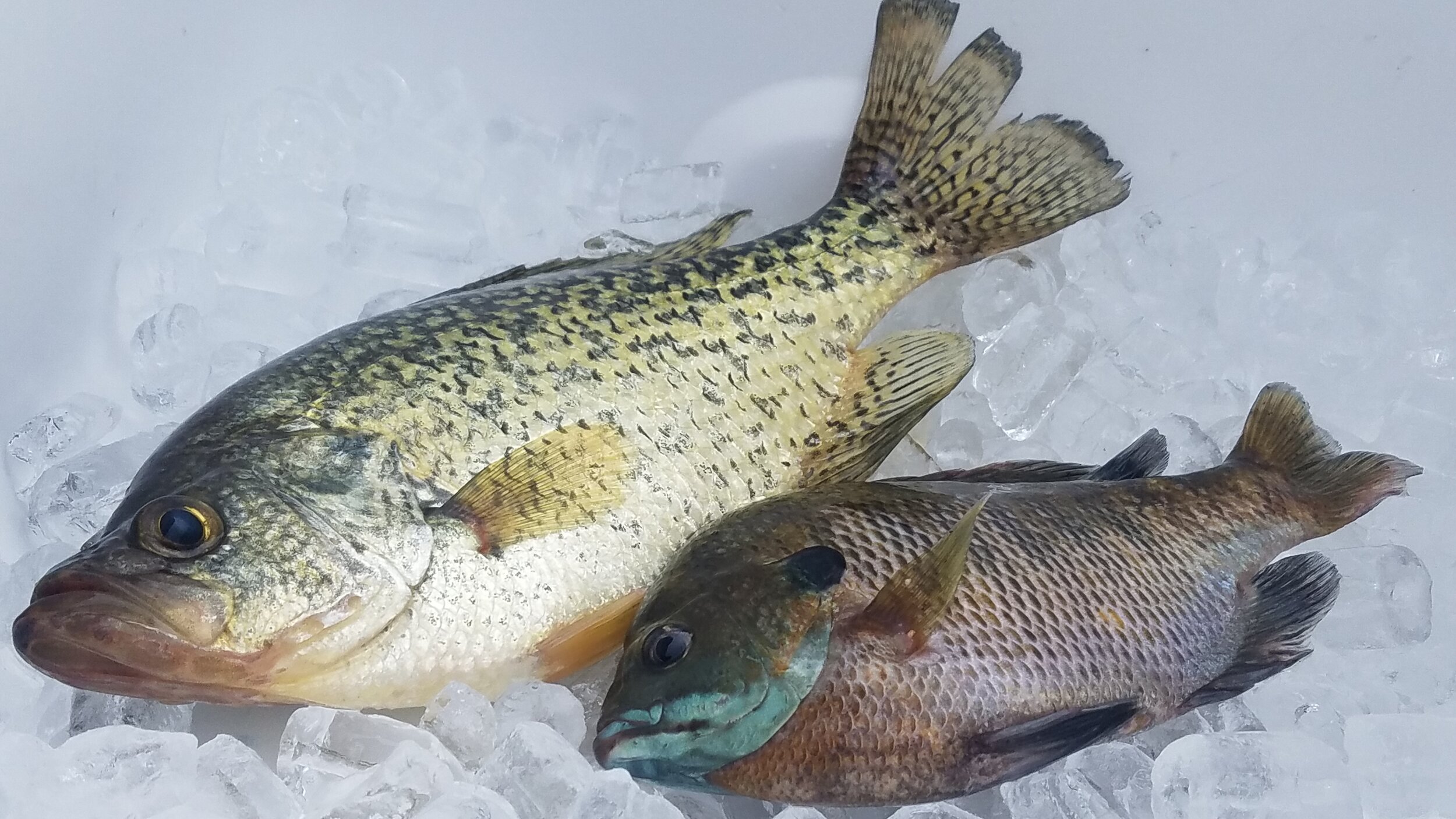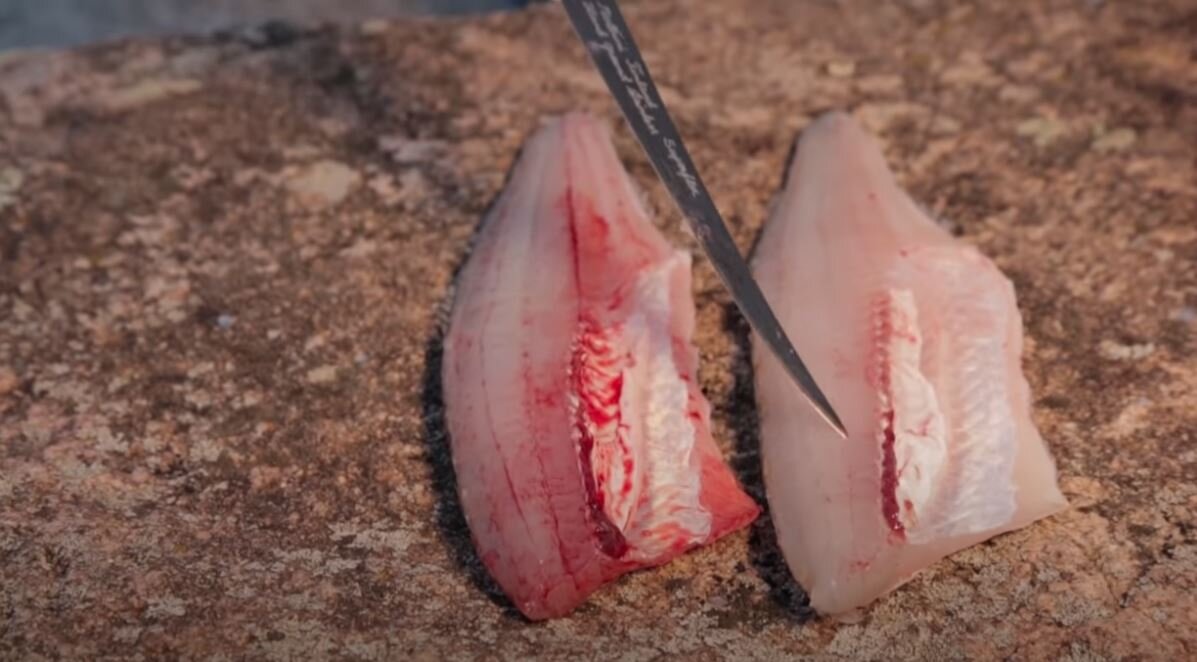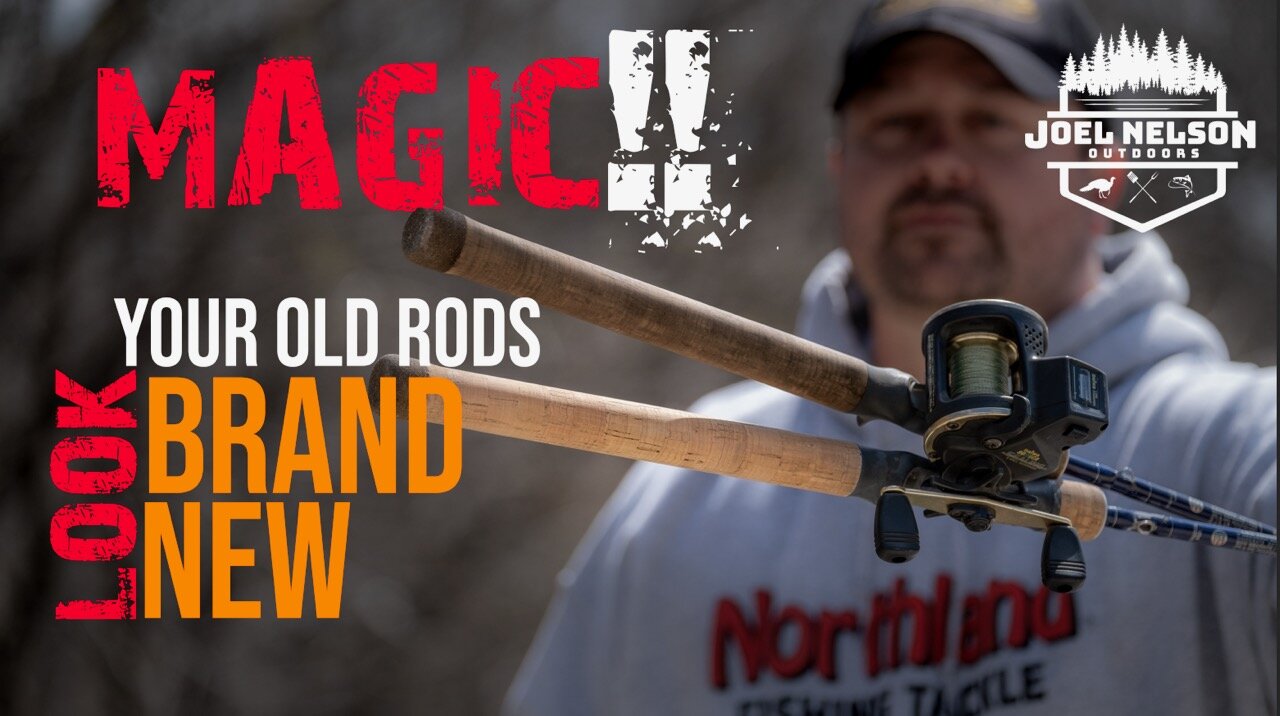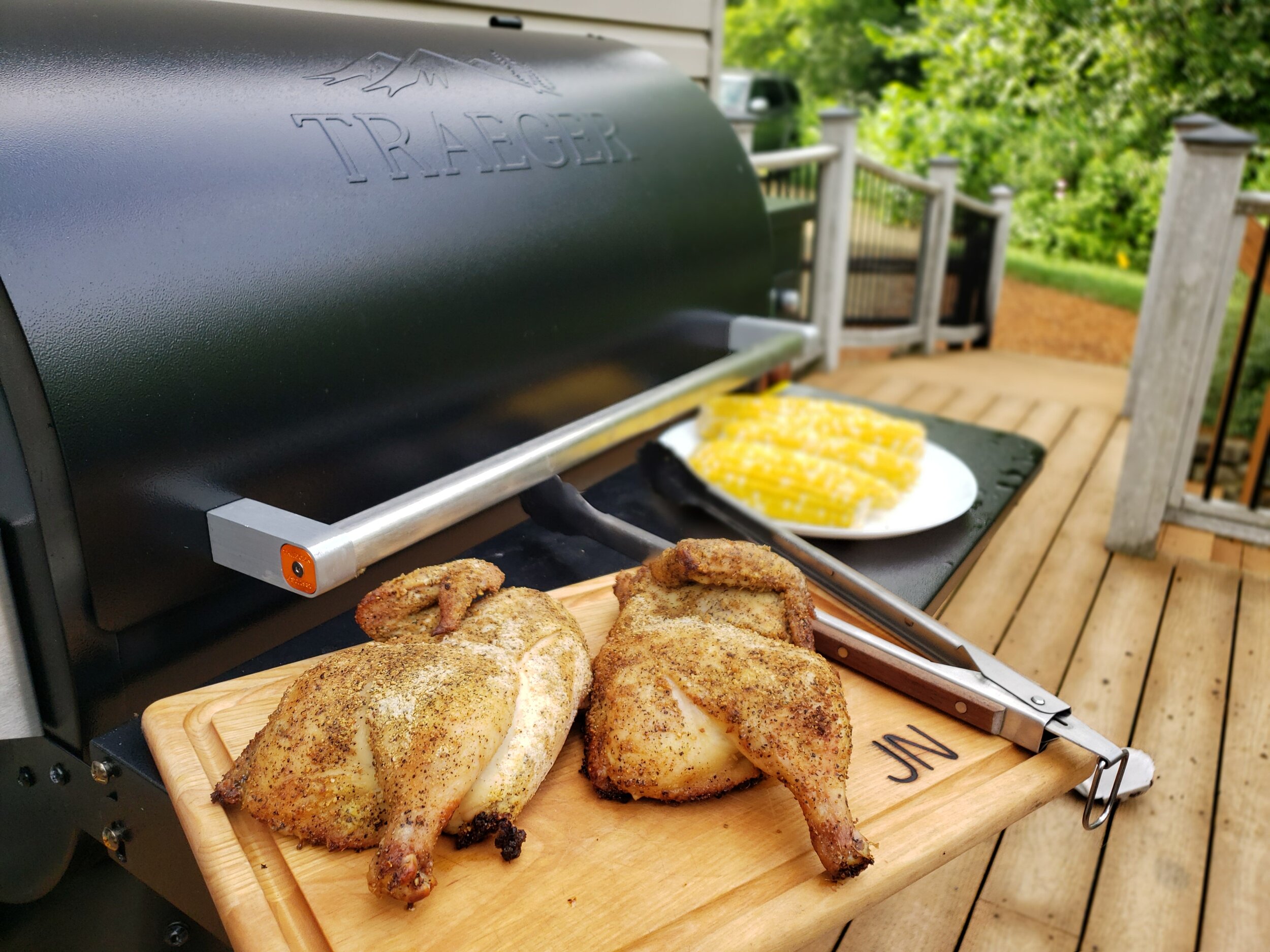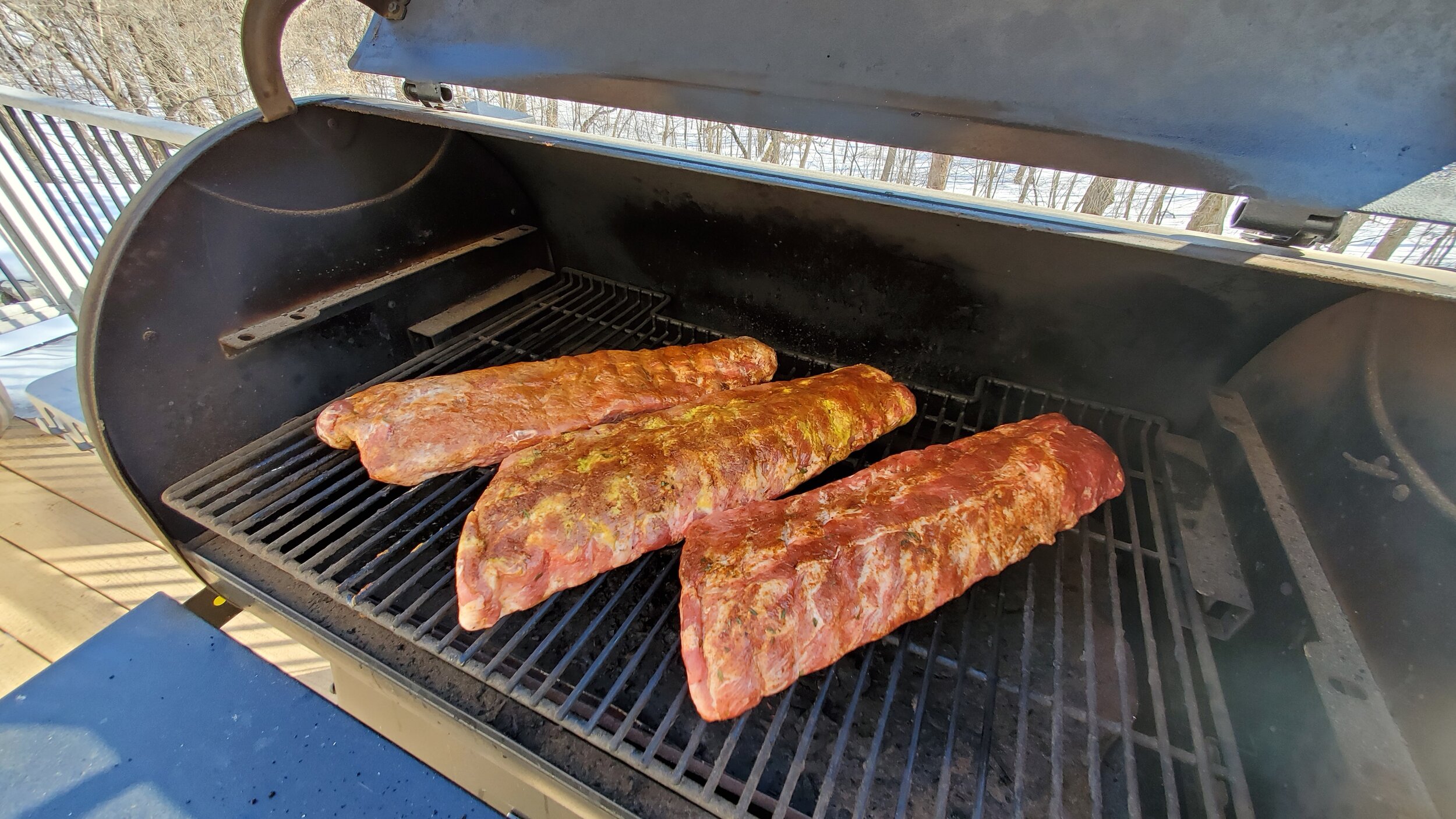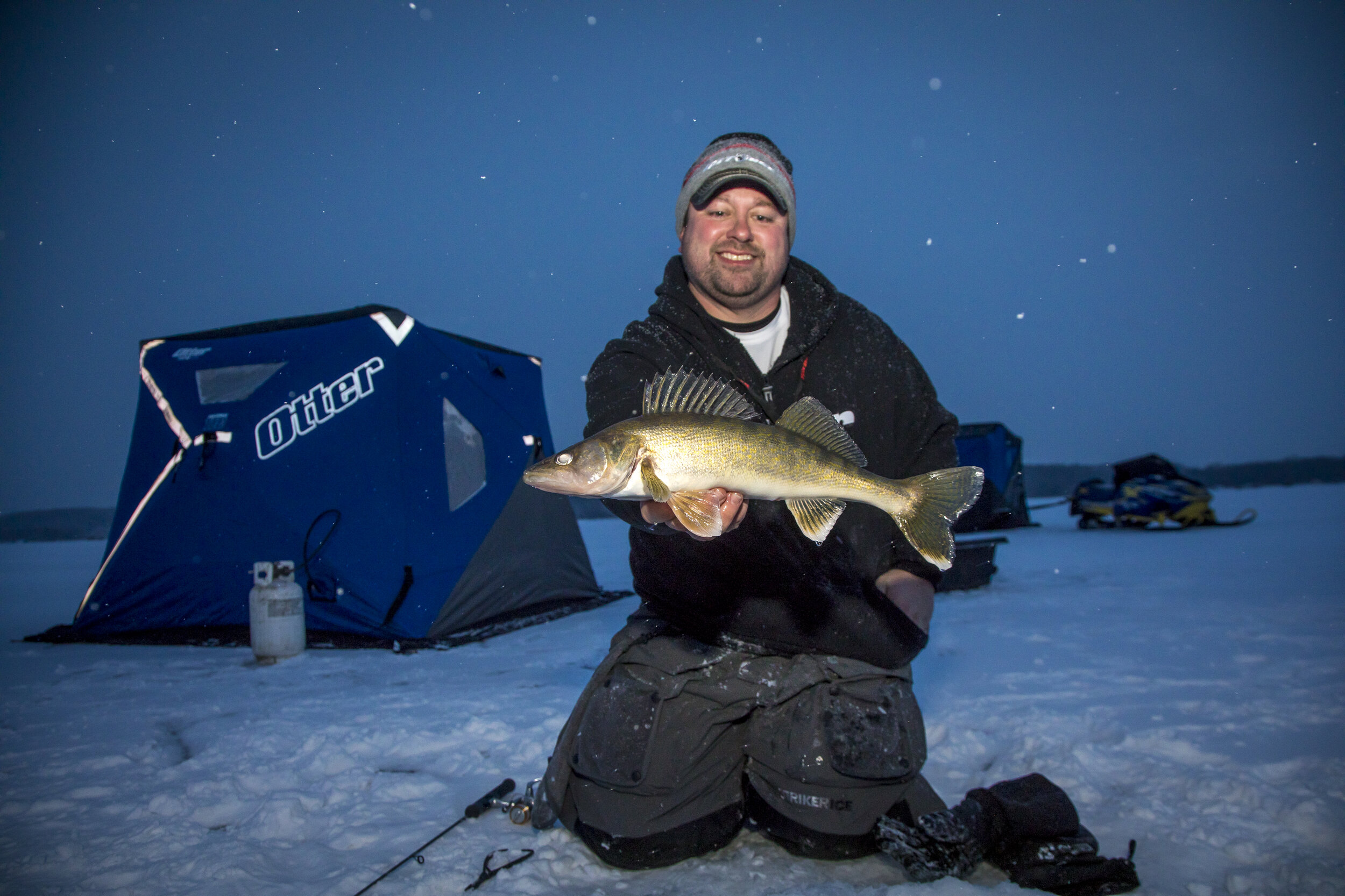Over the years, I’ve been shown by other anglers a number of ways to make fish taste better. Nearly all of them involve drawing blood from the fish by washing, salt, or general care of the catch before ever getting to the filleting stage. It’s a fascinating topic, as everyone seems to have their own family traditions or guide-tested tactics. Yet, fish have been a manner of sustenance for tens of thousands of years, so surely there must be some deeper roots to a perpetually interesting subject.
Years ago now, I caught the tail end of a great cooking show called “Mind of a Chef,” where Chef David Chang toured the famous fish market in Kyoto, Japan, explaining an ancient technique in fish preparation called “Ike Jime.” It was a more complete version of various methods I’ve been shown, where the fish is quickly brain-killed, its spinal cord is severed under the gills, and the tail portion is cut open to insert a wire down inside the length of the spine. The seemingly gruesome process is done quickly and humanely, to first quickly dispatch the fish and stop brain signals from tensing the muscles moving forward, then bleed the gill portions of the fish, and finally, to detach nerve endings that still may be sending signals from the brain and through the nervous system. The carcass is then put in an ice-water slurry to bleed out, as the fish naturally expels its blood.
It’s a technique that’s been deployed successfully for many hundreds and perhaps thousands of years, on an island that treasures its fish. It’s quickly deployed (think seconds), and is followed precisely to provide the world with sushi and sashimi-grade fish of various species. While we may not be as interested in performing the full process, or even require care of this caliber to have a simple fish-fry, there’s a great deal of scientific merit to the process itself. Namely in the taste.
Food science research has proven in tasting and physical labs that this method of fish care simply produces a better tasting fillet, again, primarily because of quick blood removal. Blood serves as a nutrient rich food source for bacterial growth, so when removed, there’s less chance of off-putting tastes or unsafe bacterial growth. Additionally, Ike Jime more humanely kills fish and its nervous system more quickly, delaying the onset and amount of rigor mortis. That small difference leads to firmer, better textured fillets which also contribute to taste improvement. It’s one of the reasons that the same fish caught in many oceans around the world never make sushi-grade. Most of the fish markets over there keep the fish alive and swimming, where Ike Jime is practiced just before presenting to sell. When cooked same-day, it apparently leads to the optimal timing for the best tasting fish.
So what’s your average angler to do when wanting a great tasting meal of walleye, bluegills, or crappie? To me, the answer involves a small, but simple portion of the Ike Jime process in your livewell, about 15 minutes or so before you plan to clean the fish. Brain stab your fish, then turn the fish upside down, and take a knife or even better, my favorite game shears, to cut the small portion of gill and connective tissue that meets at the “V” of the gills, all the way down to the spine. Here’s a quick video if you’d like a demonstration - https://youtu.be/aFFJtbuYHzs.
Fillet on right has been bled, and an un-bled fillet on left for comparison.
Perform this cut just before you make your run back to shore, put the fish in your livewell, and run the recirculation to pump bloody water from your well. The fish will expunge blood from their fillets during your boat-ride, and when you go to clean them, the result will be a nearly snow-white fillet, sans a bit of blood immediately near the top of the fish’s rib cage. Especially if you’re eating the fish soon thereafter, there’s no better way I know of to fillet and eat fish. The result is always a firmer, tastier fillet than any other method I’ve tried, and I promise you’ll wish you’d done this sooner.
I’ve never tried the full method of cutting open the tail and inserting piano wire or other firm wire down the length of the spine, though I’m sure it helps or folks wouldn’t have gone through the trouble of doing so for centuries. That said, for at least my purposes, it’s a step that’s too time consuming given how good the blood removal goes, and resulting taste is. Speaking of, don’t trust advice regarding leaving blood, slime, or other “natural” portions of the fish on your fillets. I’ve heard a number of times that “I want to taste the fish and that gives flavor,” or “You’re removing all the taste,” but those suggestions have fallen flat, and fishy at least to my taste buds. In absence of this technique, a quick rinse of each individual fillet (that part is important), followed by a saltwater solution to draw out blood, then a soak in milk has been the next best method for me when dealing with un-bled fish.
So give bleeding a try the next time you’re looking to keep a fresh meal of fish, as I’m betting it’ll be something you continue to use moving forward if you don’t already.

